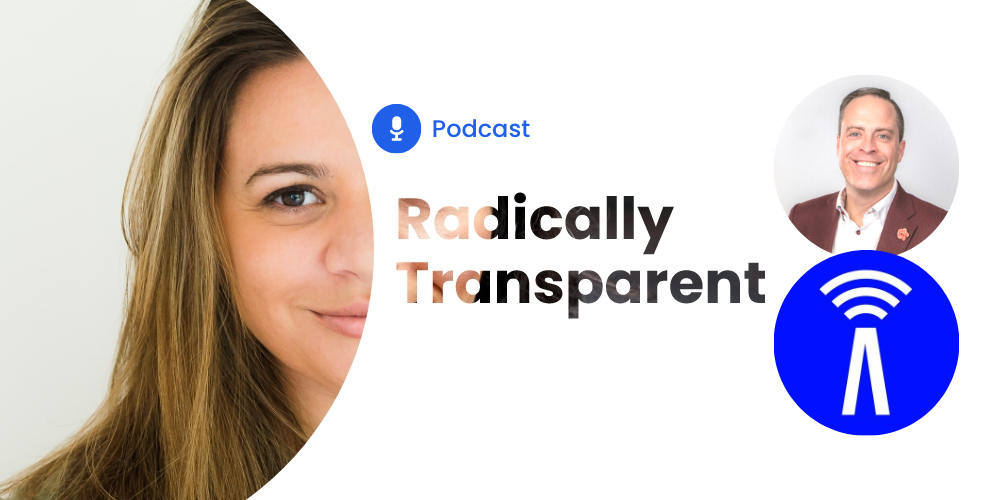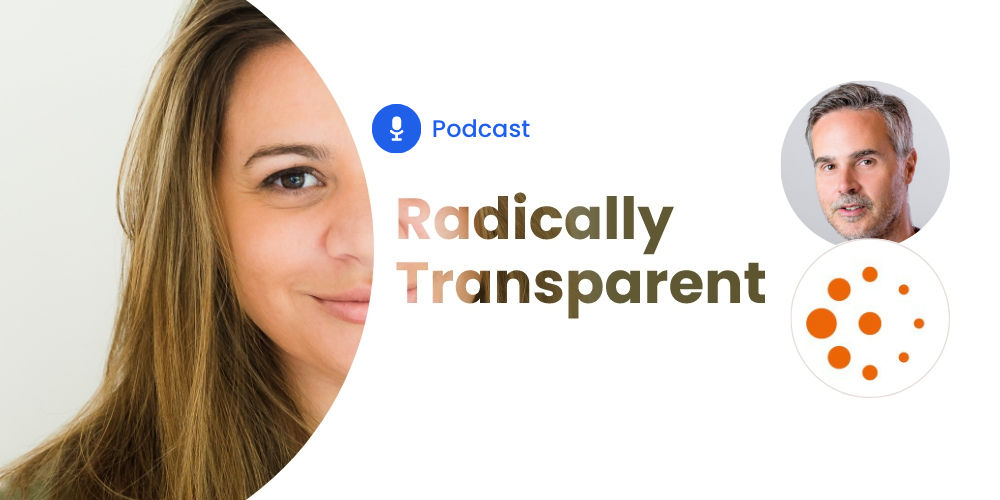What is social CRM and how to make it work for you

Table of contents
- Social CRM: What is it?
- How does social CRM differ from traditional CRM?
- What are the benefits of social CRM?
- Why you should merge social and CRM data
- How to have a successful social CRM strategy
- Ways to use social CRM for B2B marketing
- How to use social CRM to grow sales
- Social CRM tools: What are your options?
- Social CRM: Your Best Opportunity to Compete
B2B marketing campaigns tend to be more like a marathon than a sprint. Finding success at the end of the long B2B sales cycle means knowing your customers and meeting them where they’re at, which is why Customer Relationship Management tools are so essential. With a CRM, you can collect and analyze customer data to gain insights that allow you to make data-driven decisions about how to guide your buyers further down the sales funnel. Quality CRM solutions pay for themselves many times over. According to one study, the ROI can be more than eight dollars for every dollar spent.
However, if your CRM only has data gathered through form conversions and other direct interactions, it’s probably not fulfilling its true potential. There’s a wealth of additional information on your customers out there, voluntarily offered up on social media. Every like, click, and share that touches on your business is valuable information, but it’s hard to track all of this information across multiple platforms. Social CRM tools can solve this problem by integrating your internal customer data with the information they’re providing on social media.
When your B2B marketing technology is in step with the evolving social commerce landscape, you can more meaningfully engage with your customers. Then you can manage all of your interactions and analytics from within the familiar environment of your CRM.
Social CRM: What is it?
Social CRM describes any CRM system that incorporates data from customers’ social media profiles and activities. Social CRM can be a dedicated standalone platform, or it can be performed by using software tools that integrate with an existing CRM solution.
With Social CRM, businesses get more detailed insights into customer sentiments and behavior. When customers bring up complaints or inquiries, Social CRMs can empower any team within the organization to respond in real-time on the customer’s preferred platform.
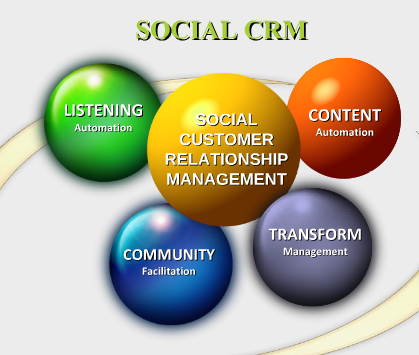
(Source: Cloudave)
How does social CRM differ from traditional CRM?
Social CRM can be so much more than just traditional CRM with some extra data fields. To maximize the potential benefits of Social CRM, you may need to adjust your sales and marketing strategies away from transactional activities like cold calls and hard selling. Instead, focus more on nurturing relationships through customer-centric interactions.
In other words, integrating social data can change your CRM from a glorified Rolodex into a tool that enables you to participate in customer-initiated conversations with interesting, relevant content.
Recommended for further reading
What are the benefits of social CRM?
There are all kinds of benefits to be realized when you can avail yourself of Social CRM’s potential. Here are a few of the most important ones:
- Social CRM helps you engage with leads on their terms and timeline, which can be especially important in the context of long, deliberative B2B sales cycles.
- When a customer has a complaint or issue with a product, they often bring it up on social media first. Social CRM makes it easier to listen to these conversations and provide an immediate response.
- Social CRM can help you find and collaborate with your brand’s biggest fans and advocates on social media.
- When people talk about your industry, brand, or products, Social CRM allows you to gather valuable insights and feedback — or even join in the conversation — while the conversation is ongoing.
- Social CRM greatly reduces the time and labor required to monitor social media and respond to issues in a timely manner.
- Brand reputation can take a hit when negative social media conversations gain momentum. Social CRM lets you engage with these conversations early on. By doing this, you can more easily quash misinformation, explain your side of the story, and maintain a positive brand image.
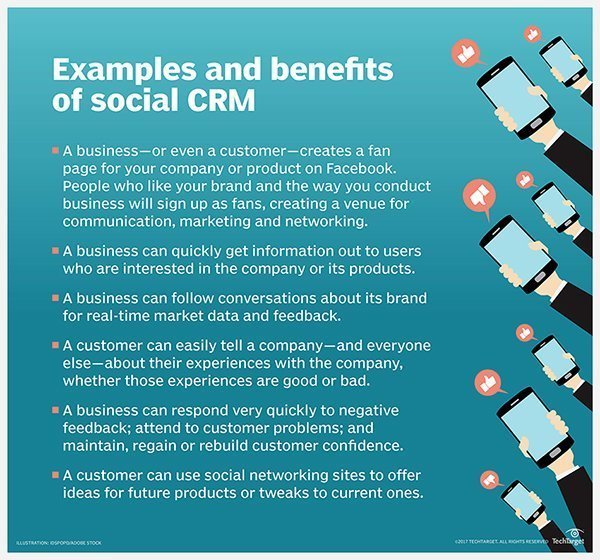
Why you should merge social and CRM data
Plenty of companies are executing a social media strategy without the benefit of Social CRM, but there are good reasons not to keep that social data in a silo. Social CRM brings your sales and marketing teams into closer alignment by providing everyone within your organization with a central hub. There, they can find a lead’s contact information, along with a history of their interactions and sentiments.
Having Social CRM doesn’t mean that old-school sales methods aren’t still in play, because they still have value within the sales process. But consider how much more effective a cold call could be when it’s enhanced with sales intelligence gleaned from social media.
Keep in mind that Social CRM has its own set of metrics to use for measuring performance:
- Traffic (website visits driven by social media)
- Engagement (likes, clicks, shares, comments)
- Follower Level (not just how many followers you have, but how active they are)
- Brand Mentions (who’s talking about your brand, where are they saying it, and what are they saying?)
Social CRM doesn’t supplant the traditional kind, nor is it just an add-on. It’s a hybrid CRM that is more customer-centric and requires a different strategic approach.
How to have a successful social CRM strategy
First, you need the right tools for the job, which may be provided by your primary CRM platform or by third-party extensions. These tools include a dashboard, listening and notification features, reporting and analytics, and a content manager.
Next, you need to get all of your teams on board—especially sales, marketing, and customer service. These teams can most effectively use social data and immediate communication.
Once your Social CRM is up and running, start taking advantage of its benefits. For example, you can use social listening to find relevant conversations, provide immediate customer service responses over social media, enhance customer profiles with social media insights, and personalize your sales and marketing messages.
Finally, measure your results. Analyze the key Social CRM metrics to determine the impact of your activities and adjust as you go accordingly.
Ways to use social CRM for B2B marketing
It’s all too easy for marketing to fall into a pattern where the business pushes out content, and the audience is expected to consume it passively. This pattern can be especially problematic in B2B, where the purchase is likely to be a significant investment. Multiple decision-makers are involved, each with their own priorities, concerns, and questions.
By leveraging the power of Social CRM, you can make your B2B marketing more of an interactive dialogue. Social data can help you create more accurate customer personas, allowing you to target your messaging more precisely and create personalized experiences that speak directly to what your buyers want. With Social CRM, you can effortlessly monitor and engage with social media. It allows you to make your brand part of ongoing conversations about issues and developments within your industry, strengthening your reputation while building trust and authority.
How to use social CRM to grow sales
If you’re listening, you can learn a lot from what customers are talking about on social media. It may be the problems they’re facing, the pain points they’re currently dealing with, or their wishes for solutions and features. A Social CRM strategy lets you bring a much greater degree of personalization and interactivity to your sales tactics. Instead of relying on educated guesses and generalizations, your sales team can zero in on the issues that matter the most to your leads with uncanny accuracy.
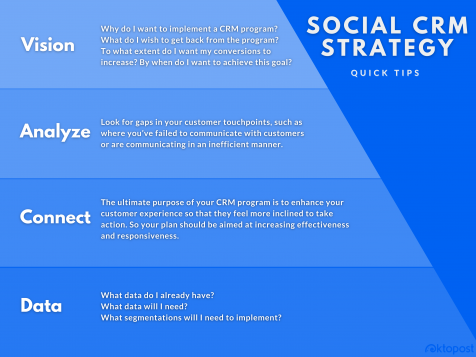
Source: Created kindly by CrazyEgg
Social CRM tools: What are your options?
When it comes to implementing Social CRM, you have two main options: a standalone platform or an integration with a traditional CRM platform.
For many businesses, the integration option may be more cost-effective and easier to get rolling. Up to 91% of businesses with ten or more employees already have a CRM solution. If you’re happy with your existing CRM, it makes sense to keep using it in concert with a powerful social media management tool instead of starting over from scratch.
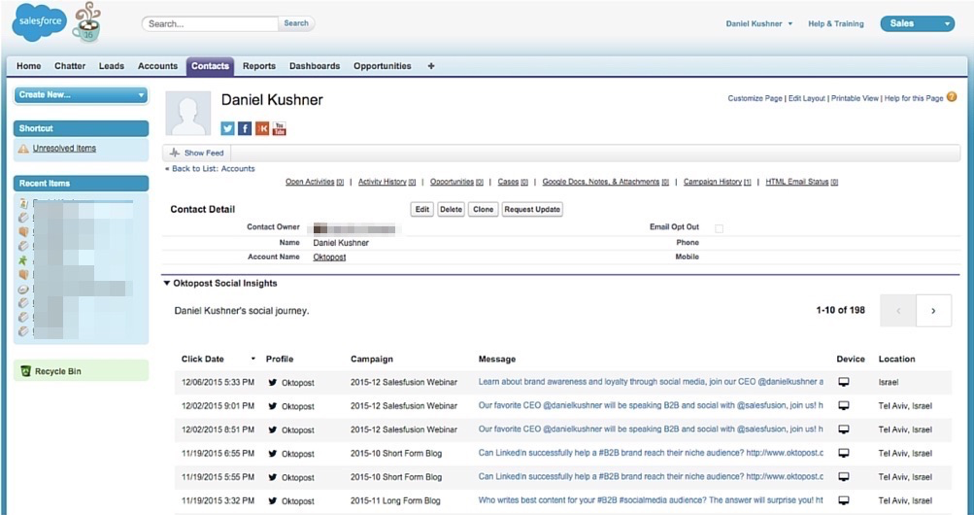
Solutions like Oktopost can integrate with robust CRM platforms like HubSpot and Salesforce, injecting social media data and analytics into the CRM you already know and love. Using two proven, powerful tools designed to work well together will be the best option for most organizations.
Whether you’re shopping for an integrated solution or a standalone platform, here are some essential features to look for:
- Audience segmentation and lead prospecting based on social media data
- Social listening capabilities that place issues brought up on social media into your customer service queue
- Customer profile/persona enrichment
- Content, campaign, and publishing management
- Data analytics and reporting
Social CRM: Your Best Opportunity to Compete
As the media and methods we use to communicate with each other change, CRM is no longer just a place to store names and contact information. Up-to-date CRM systems fully adapted to the current state of commerce and technology enhance every aspect of maintaining strong customer relationships.
Social CRM provides businesses with the best opportunity to compete in a B2B environment dominated by social media interactions. Your customers are on social media telling you what they want, need, and hope to find. With the right Social CRM solution, you can hear what they’re saying and respond with the answers they’re looking for – creating value for them and more sales for you.

